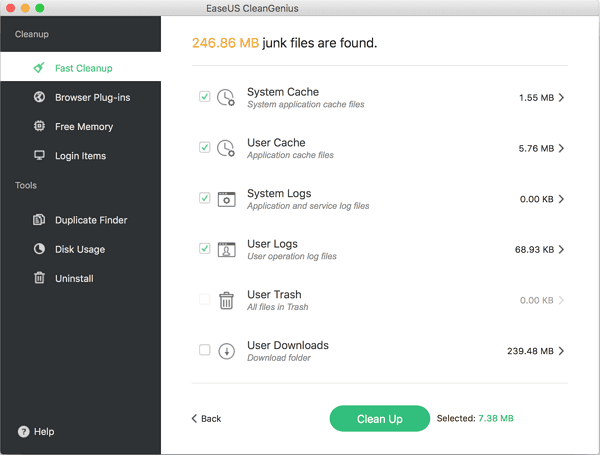



Here's a list of Macs that can run the Mojave:Īlthough some mid-2010 and mid-2012 models have Metal-capable GPU, so it's worth checking Go for a system cleanup and backup your data - this will allow you to easily return your Mac to the condition it was in before you installed macOSįirst of all, check that your Mac is compatible with new macOS.
#MAC DISK CLEANUP UTILITY COMMAND INSTALL#
If you plan to clean install macOS on a non-startup drive, you don't need it Notice: USB drive is needed for a clean install on your Mac’s startup drive. macOS Mojave Installer, available from the Mac App Store.To complete the clean install procedure, you'll need: We'll also give you main requirements below. If you were able to run the previous macOS High Sierra with no visible issues, you're probably fine.
#MAC DISK CLEANUP UTILITY COMMAND HOW TO#
How to prepare your Mac for the clean installīefore you do anything, check that your Mac is able to run Apple's new operating system. If you haven't, another good news: we'll take you through it step by step. If you did a clean install of macOS High Sierra last year, here's some good news: it's pretty much the same. Or maybe (and we get you) you just want that freshly-bought Mac experience again. The usual reasons are: system jut has started to affect your Mac’s performance, you need to make sure your old data is cleared, you’re selling a Mac or passing it to a new owner. Which is why if you feel like there’s a need for a purge - in the best meaning of this word - among your files and system leftovers, it makes more sense to run an clean install. Including the ones you don’t want anymore, and including some system junk left from the previous OS. You get a new desktop wallpaper and all your applications and files right where you left them. You’d usually simply roll the new macOS right over your old one.


 0 kommentar(er)
0 kommentar(er)
